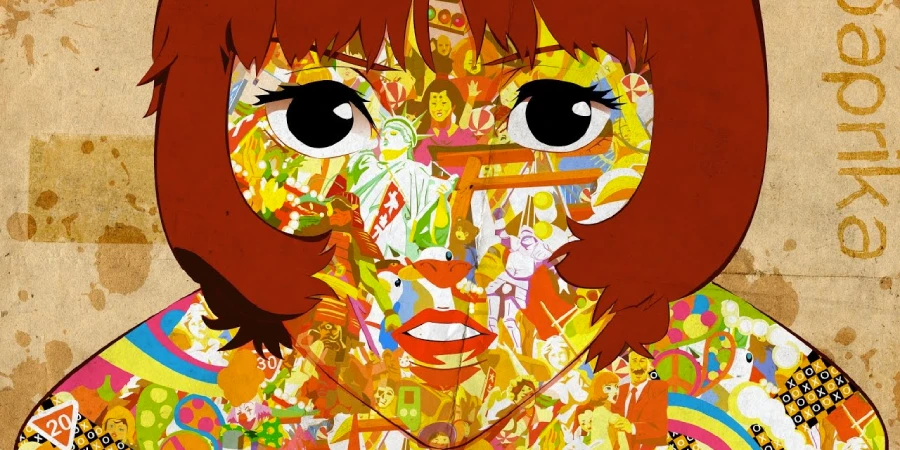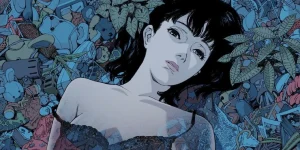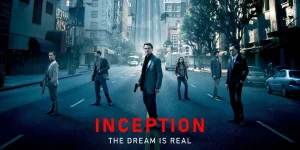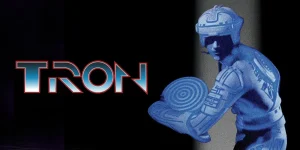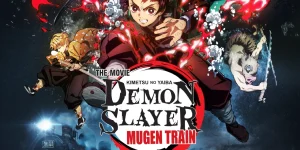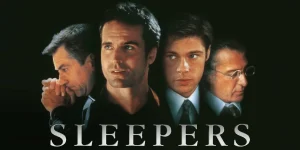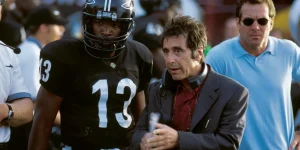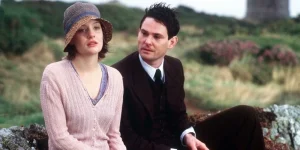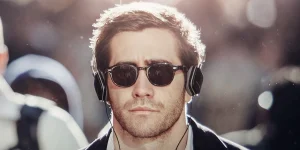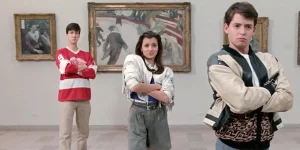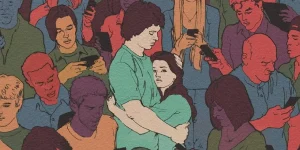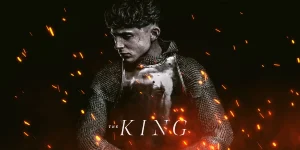Satoshi Kon’s Paprika is a dazzling, mind-bending animated film that blurs the line between dreams and reality. Released in 2006 and based on Yasutaka Tsutsui’s 1993 novel, the film is widely regarded as a masterpiece of anime and a major influence on many sci-fi films that followed — most notably Inception.
Table of Contents
ToggleDetailed Summary
Introduction: The DC Mini and Dream Therapy
Set in the near future, the film centers around a revolutionary device known as the DC Mini, a prototype that allows users to enter and explore people’s dreams. Developed by a research team led by Dr. Kōsaku Tokita, the DC Mini was intended for therapeutic use, helping patients confront deep psychological issues.
Dr. Atsuko Chiba, a stern but brilliant scientist, uses the DC Mini in secret to become her dream-world alter ego: Paprika — a vibrant, whimsical figure who helps people confront and resolve their subconscious conflicts.
The Theft of the DC Mini
Trouble begins when several DC Mini prototypes are stolen before being fully secured. Without the proper safeguards, the device can be used to enter anyone’s dreams — without their permission — and worse, the dreams begin invading the waking world. People begin to behave irrationally, spouting nonsensical dream logic even while conscious.
One victim is Dr. Shima, the chairman of the institute, who hallucinates himself trapped in a bizarre parade full of objects and characters that repeat in an eerie, dreamlike loop. This dream-parade becomes a central visual motif throughout the film.
Enter Detective Konakawa
The story intertwines with Detective Toshimi Konakawa, who is undergoing therapy with Paprika. Haunted by a recurring dream involving a murder and an unfinished film reel, he struggles with guilt and a blocked memory. His sessions with Paprika gradually unravel his trauma and guilt — a subplot that serves as a thematic parallel to the main conflict.
Reality Melts: Dreams Take Over
As the boundaries between the real world and dreams begin to collapse, Atsuko and her colleagues attempt to identify the mastermind behind the DC Mini theft. Suspicion initially falls on Dr. Tokita due to his childlike innocence and lack of caution, but the true culprits are later revealed.
The villains are Dr. Seijiro Inui, the wheelchair-bound chairman of the institute, and Dr. Osanai, his loyal but unstable accomplice. Inui sees dreams as a means to return the world to a purer, more controlled state, rejecting individuality and progress.
Osanai, meanwhile, harbors an unhealthy obsession with Dr. Chiba and attempts to destroy Paprika as a form of asserting dominance over her.
The Dream Parade and Total Collapse
The climax unfolds as the surreal “dream parade” overtakes Tokyo, with reality completely dissolving. Gigantic dolls, appliances, religious figures, and cultural icons march in chaotic unison — a visual manifestation of humanity’s collective subconscious, now unchecked and blending with waking life.
Atsuko is nearly consumed by the dream world, but Paprika re-emerges as a goddess-like figure, absorbing the chaos and restoring balance. She transforms into a giant baby, symbolizing rebirth and purity, and devours Inui’s grotesque dream avatar. The collapse ends, and the boundaries between dream and reality are re-established.
Movie Ending
In the end, Detective Konakawa resolves his dream trauma, understanding that he abandoned filmmaking — his passion — after the death of a close friend. He finally watches the “unfinished movie” in his dream and moves on, his therapy complete.
Meanwhile, Dr. Atsuko Chiba and Dr. Tokita are safe. Atsuko reveals her love for Tokita — a surprising twist, as he is portrayed as emotionally immature throughout the film. Yet, in her vulnerable moment, she realizes that his compassion and genius make him the person she wants to be with. Their connection represents emotional healing and the union of intellect and emotion.
In the final scene, Konakawa is told that a new movie called “Dreaming Kids” is about to be released — a subtle nod that dreams will continue to be explored, but hopefully with respect and care. The film ends on an ambiguous yet emotionally satisfying note.
Are There Post-Credits Scenes?
No, Paprika does not have a post-credits scene. However, the closing credits are accompanied by music and abstract dream imagery, so many viewers stick around just to absorb the film’s lingering atmosphere.
Type of Movie
- Genre: Science Fiction, Psychological Thriller, Mystery, Animation
- Themes: Dreams vs. reality, identity, repression, technology, trauma, perception, control
Paprika walks a fine line between psychological thriller and surrealist art. It’s fast-paced, experimental, and full of philosophical undercurrents — perfect for fans of thought-provoking cinema.
Cast (Voice Actors – Japanese Version)
- Megumi Hayashibara as Dr. Atsuko Chiba / Paprika
- Tōru Furuya as Dr. Kōsaku Tokita
- Kōichi Yamadera as Detective Konakawa
- Katsunosuke Hori as Dr. Osanai
- Toru Emori as Dr. Shima
- Hideyuki Tanaka as Dr. Inui
Film Music and Composer
The score is composed by Susumu Hirasawa, whose eclectic, electronic-heavy compositions perfectly complement the film’s dreamlike nature.
Notable track: “Parade”, the hypnotic and unsettling theme that plays during the dream invasion scenes. It’s become iconic among anime fans for its surreal and catchy loop.
Filming Locations
Since Paprika is an animated film, there were no physical filming locations. However, many of the cityscapes and interiors are modeled after real Tokyo locations, including Shinjuku and classic movie theaters, lending the film a grounded sense of place even as dreams distort it all.
These realistic backdrops are essential — they make the eventual dream distortions feel all the more jarring and impactful.
Awards and Nominations
- Nominee – Golden Lion at Venice Film Festival (2006)
- Best Feature Film – Tokyo Anime Awards (2007)
- Best Music – Tokyo Anime Awards
- Nominee – Best Animated Feature at multiple international festivals
Though it didn’t win major Western awards, the film is critically acclaimed and often listed among the best animated films of the 21st century.
Behind the Scenes Insights
- Director Satoshi Kon worked closely with original author Yasutaka Tsutsui, who gave the film his full support.
- The movie was in development for years — Satoshi Kon considered it his most technically ambitious project.
- The dream sequences were hand-animated without relying on CG, making their seamless motion all the more impressive.
- The film was Christopher Nolan’s inspiration for Inception (2010), particularly the hotel hallway and collapsing dream city.
Inspirations and References
- Based on the novel Paprika by Yasutaka Tsutsui (1993)
- Influences: Carl Jung’s theories of the collective unconscious, Freud’s dream analysis
- Heavily inspired by Terry Gilliam’s surrealism and European cinema, including Fellini
- Visual nods to 2001: A Space Odyssey, Akira, and Perfect Blue (Kon’s earlier film)
Alternate Endings and Deleted Scenes
There are no publicly known alternate endings or deleted scenes. Satoshi Kon was known for his meticulous planning — the final product represents his complete vision.
Book Adaptations and Differences
While the movie follows the novel’s core premise, it makes several changes:
- The novel features more scientific explanations of dream therapy.
- Paprika’s identity is more mysterious in the novel, while the film reveals the duality early on.
- The ending in the novel is more drawn-out and philosophical; the film opts for a visually explosive finale.
- The love angle between Chiba and Tokita is more prominent in the film than in the book.
Memorable Scenes and Quotes
Key Scenes
- The dream parade sequence — pure surreal brilliance.
- Konakawa being chased through different movie genres in a single dream.
- Osanai attempting to “peel” Paprika from Atsuko’s body in a terrifyingly symbolic scene.
- The moment Paprika floats through cityscapes in a lucid, dreamlike glide.
Iconic Quotes
- “Don’t you think dreams and the Internet are similar? They are both areas where the repressed conscious mind vents.”
- “Isn’t that illegal?”
- “Reality is just a crutch for people who can’t handle drugs… or dreams.”
Easter Eggs and Hidden Details
- The movie theater Paprika visits is modeled after the Shinjuku Piccadilly, a real Tokyo cinema.
- Konakawa’s dream sequence mimics entire film genres — from noir to horror — as a tribute to cinema history.
- The “unfinished film” motif is a meta-reference to the idea that reality is shaped by interpretation, much like films are.
- The doll in the parade mirrors traditional Japanese Hina dolls, symbolizing repressed cultural identity.
Trivia
- The film was Satoshi Kon’s final completed feature before his death in 2010.
- Paprika was Japan’s submission for the 2007 Academy Awards, though it didn’t receive a nomination.
- It’s one of the few anime films where a female character saves the day without becoming oversexualized — a major plus in its storytelling.
- Christopher Nolan has never officially confirmed the link to Inception, but fans and critics have drawn dozens of parallels.
Why Watch?
- If you love psychological thrillers, dream logic, or reality-bending sci-fi, this is essential viewing.
- The animation is stunning, especially considering it predates much of today’s digital workflow.
- It’s a film that rewards rewatching — you’ll spot new details and themes each time.
- An intellectual and emotional journey with no easy answers, yet incredibly satisfying.
Director’s Other Movies
- Perfect Blue (1997)
- Millennium Actress (2001)
- Tokyo Godfathers (2003)
- Paranoia Agent (2004, TV series)
Recommended Films for Fans
- Inception (2010)
- Perfect Blue (1997)
- Millennium Actress (2001)
- Waking Life (2001)
- The Animatrix (2003)
- Ghost in the Shell (1995)
- A Scanner Darkly (2006)

